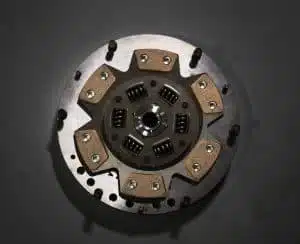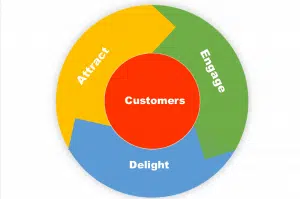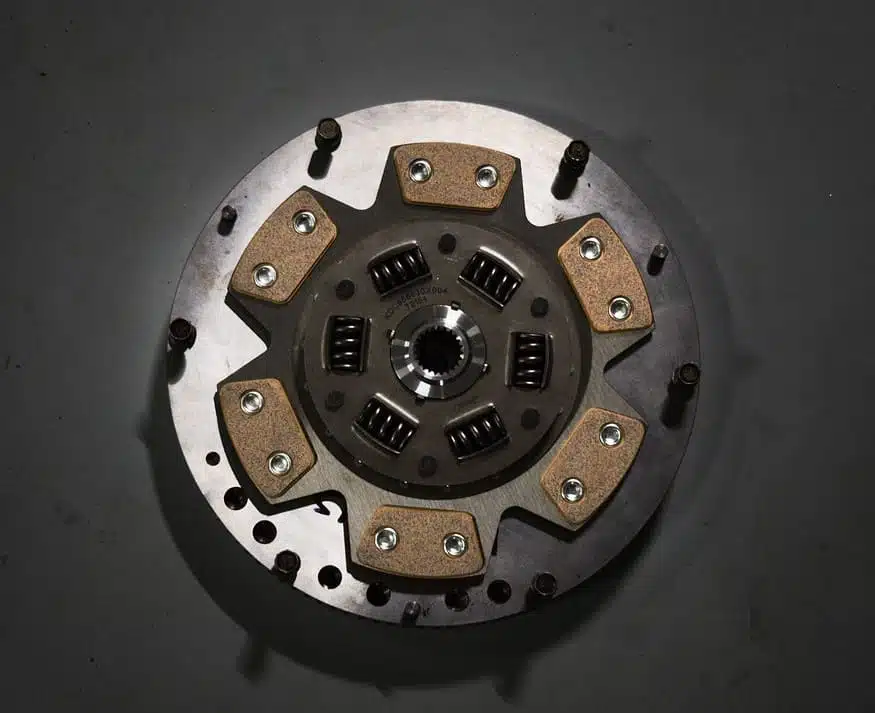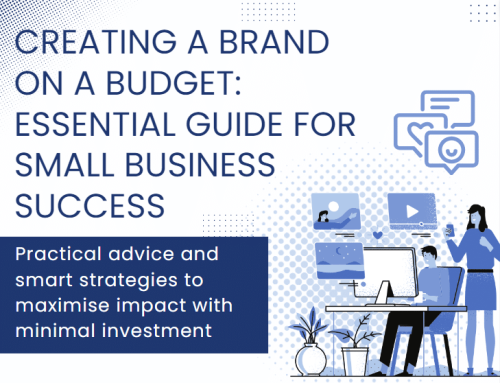The age of the flywheel: putting the customer back at the centre of your growth strategy

Last week we reviewed how funnels work to move customers through your sales process.
Why?
First, because it’s always a good idea to take one last look in the rear-view mirror before driving off into the sunset on a new adventure. (Knowing where you are coming from helps you better understand where you are headed.)
Second, because we don’t want you to chuck all your funnels out the proverbial window. There’s still room for funnels in HubSpot’s new flywheel model. (More on this later.)
A quick recap: why funnels don’t fit
We left off at a point where we realised that although ‘sales’ and ‘funnels’ have been kicking around together for a century or more, this linear model just no longer reflects how customers actually interact with your business.
In a funnel, a customer is simply the outcome of your sales process. Like a fairy tale, the customer buys your product or service and lives ‘happily ever after’. But what happens then? Who knows… you’re too busy trying to refill the funnel to ask!
A funnel also doesn’t take into account a fundamental part of modern life that probably wasn’t such a problem for business people 100 years ago.
Choice.
Crowded markets + the Internet = major changes in customer behaviour
Trust is at an all time low. There are too many choices, too many ads, too much content, too much NOISE! It has led to complete customer overwhelm.
Choosing is hard!
Think about something as simple as finding something to watch on Netflix. You open up the menu and BAM! Thousands of options. And they are constantly adding more. Most of us have around 45 minutes to watch something before exhaustion causes us to involuntarily make a whirring noise and shut down for the day. You don’t want to spend that precious downtime going cross-eyed trying to scan menu after menu. And goodness knows we’re not willing to waste it on a bad tv show!
Social Proof: how customers ‘qualify their leads’
In an effort to at least cut down on those choices we turn to each other. Take the Netflix example above; in any online community on any given evening you will see people asking ‘what are you watching on Netflix?’ (Anecdotally, I recently realised that I will only watch something that at least three people have told me is a ‘must see’.)
This is a simple reflection of the way we choose most things now. We need that social proof. As customers, we’re all looking to qualify our own leads when searching for the solutions to our problems.
And therein lies the shift. Customers hold the key to driving sales (and therefore growth) in your business.
Reputation is everything
The Internet has made word of mouth more important (and easier for customers to engage in) than ever before. You may recall from our blog post on boosting your online reviews that 93% of customers say that online reviews influence their decision to buy.
The upside: your customers could be doing a lot of the heavy lifting for you
The people who have purchased from your business are becoming your most powerful asset. They are now an army of influencers.
When customers have a great experience with your brand, they will help grow your business by:
- repeat purchasing
- telling everyone they know to buy from your business
- (ideally) both
So, rather than simply attracting more general ‘traffic’ to your business, the focus needs to be on creating the best possible customer experience. The kind that’ll have them singing from the rooftops.
Enter the Flywheel
A Flywheel, as HubSpot defines it, is “a machine that stores rotational energy”. You add energy to the wheel and it starts to rotate. Apply more energy? It spins faster. And it will keep spinning… until some form of friction slows it down.
It looks like this:

Note how the sales and marketing process has shifted from linear to circular. At the ‘end’ of the conversion process, the delighted customers help you to attract new business… and so the wheel turns again
Attract
Truly useful and valuable content is still the best way to attract new customers to your business. Remember: this isn’t about what you want to say, it’s about what customers want to know.
Engage
Don’t just focus on closing the deal. This is about finding out where your customers prefer to ‘hang out’ (in terms of marketing channel) and offering them more of that irresistible, useful content that really serves them. No pressure. Just let them learn about you in their own time – take a long-term approach to the relationship.
Delight
You should aim to delight your customers every single time they have contact with your business. Product/service quality is, of course, essential, but it isn’t enough. The entire sales process should be a real pleasure for prospects. Customer service levels should also exceed expectations. Your goal: to turn every customer into a part of your sales force.
You’ve gotta spin to win
Each rotation of the wheel represents the growth of your business. When you apply ‘force’ to parts of your business that have the greatest impact (this could be through your sales, marketing or customer service efforts), it will spin faster.
Until something happens to slow it down. HubSpot refers to this as ‘friction’.
What causes friction in the customer experience?
Flywheel friction points will differ from business to business but will come down to anything that makes your customer’s life difficult (ie makes it harder for them to buy from you).
The most common issues often arise from:
- a misalignment between marketing and sales
- trying to sell to customers that aren’t a good fit
- not delivering on promises
- processes that make it hard to purchase
- poor customer onboarding processes or post purchase support
- business functions being too ‘silo-ed’ – so they don’t understand or talk to each other
It’s time to align
Sales and marketing have long fought over who ‘owns’ the funnel. Here, the flywheel comes to the rescue again, forcing all functions to work together on a common goal: deliriously happy customers.
Even as a small business owner, this more wholistic view of your business will help you to ensure that your sales, marketing and customer service efforts support each other to add energy to turning your flywheel.
What if there’s a fraction too much friction?
Look at your business through the eyes of your customers. Closely examine every touchpoint and seek out those areas for improvement.
Once you find them, celebrate! Be glad that you have uncovered an area of your customer experience that is holding them back from purchasing. If you know about it, you can probably fix it and unlock that potential.
Unhappy customer? Dig here for gold!
Even if a customer has a negative experience with your business, you can still reduce friction by making sure you part on good terms. Make a habit of asking unhappy customers what you could have done better. You will learn far more from them than your happy customers. Plus, any changes you make as a result of their feedback will often have the most positive impact.
Don’t throw out your funnels!
Funnels are still useful for fuelling your flywheel. Really, the flywheel represents the wider business, providing a context for potentially many funnels that work to attract new customers to your business.
The measurable aspect is also important. Since a lot of data about customer behaviour can be collected, particularly through online marketing funnels, this can provide great insights, helping you to identify those all-important friction points.
The flywheel: a never-ending conversion process
So that brings us to the end of our two-part series on the funnel vs the flywheel. I see a lot of merit in HubSpot’s seismic shift in thinking. If customers are playing such a key role in attracting new customers to your business, it makes sense to place them at the centre of your strategy and leverage that energy to keep the wheels turning. Sales and marketing have always agreed that ‘customer is king’. The flywheel puts customers squarely back onto their rightful throne.




